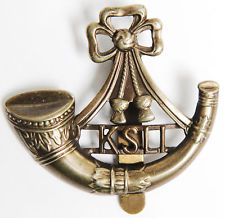Personal Details
Born: January 12th 1893 and baptised at St Alkmund’s parish church a month later.
Family: The fifth of six children born to of John and Charlotte Ankers of Dodington, Whitchurch, Shropshire. In 1920 he married Annie E. Reynolds at Whitchurch, Shropshire and together they had 4 children, Frank, Doris M, Alan G, and Reginald W.
Residence: In 1901 he was living with his mother, sister and brother at 41b Newtown Street, Whitchurch, Shropshire.
Employment:
Died: During the first three months of 1925 at Atcham, Shropshire aged 32.
Military Details
Regiment: King’s Shropshire Light Infantry 7th Battalion
Rank: Lance Corporal
Service Number: 22032
Date of Enlistment: Not known
Date of Discharge: Not known
Reason for Discharge: Not known
Other Information: He was one of five brothers who enlisted in the Army during WW1. Thomas Ankers died and is commemorated on Whitchurch War Memorial while the other four survived.
Herbert was awarded the Campaign Medals (British War Medal, and Victory Medal).

The British War Medal (also known as 'Squeak') was a silver or bronze medal awarded to officers and men of the British and Imperial Forces who either entered a theatre of war or entered service overseas between 5th August 1914 and 11th November 1918 inclusive. This was later extended to services in Russia, Siberia and some other areas in 1919 and 1920. Approximately 6.5 million British War Medals were issued. Approximately 6.4 million of these were the silver versions of this medal. Around 110,000 of a bronze version were issued mainly to Chinese, Maltese and Indian Labour Corps. The front (obv or obverse) of the medal depicts the head of George V. The recipient's service number, rank, name and unit was impressed on the rim.
The Allied Victory Medal (also known as 'Wilfred') was issued by each of the allies. It was decided that each of the allies should each issue their own bronze victory medal with a similar design, similar equivalent wording and identical ribbon. The British medal was designed by W. McMillan. The front depicts a winged classical figure representing victory. Approximately 5.7 million victory medals were issued. Interestingly, eligibility for this medal was more restrictive and not everyone who received the British War Medal ('Squeak') also received the Victory Medal ('Wilfred'). However, in general, all recipients of 'Wilfred' also received 'Squeak' and all recipients of The 1914 Star or The 1914/1915 Star (also known as 'Pip') also received both 'Squeak' and 'Wilfred'. The recipient's service number, rank, name and unit was impressed on the rim.

